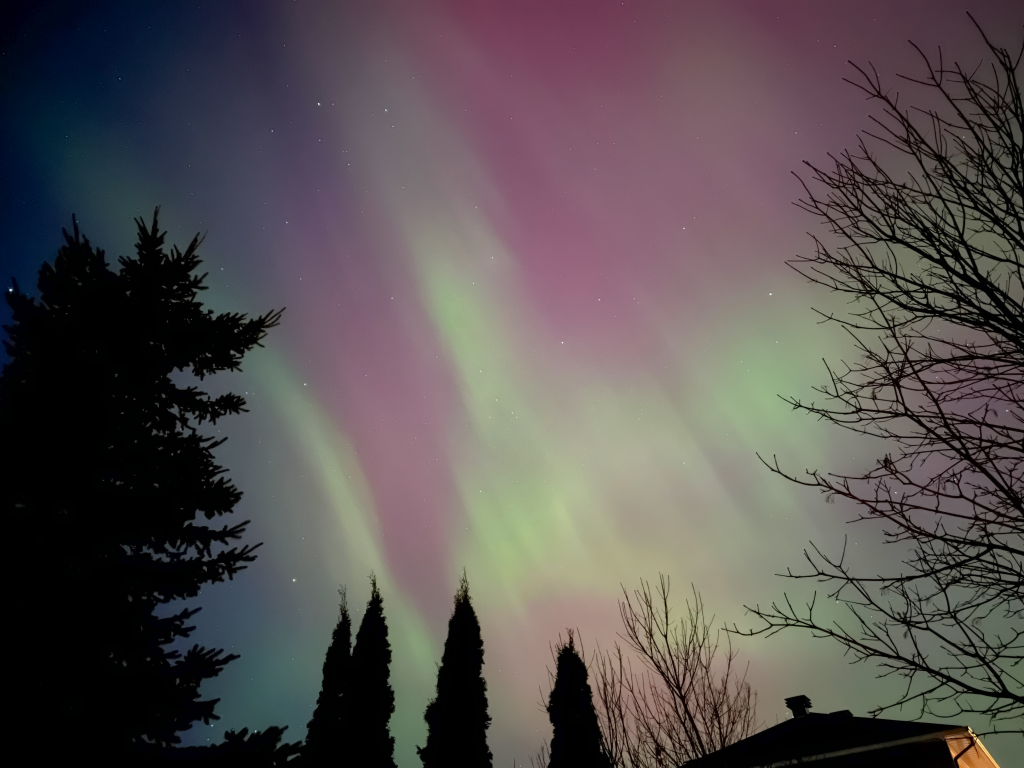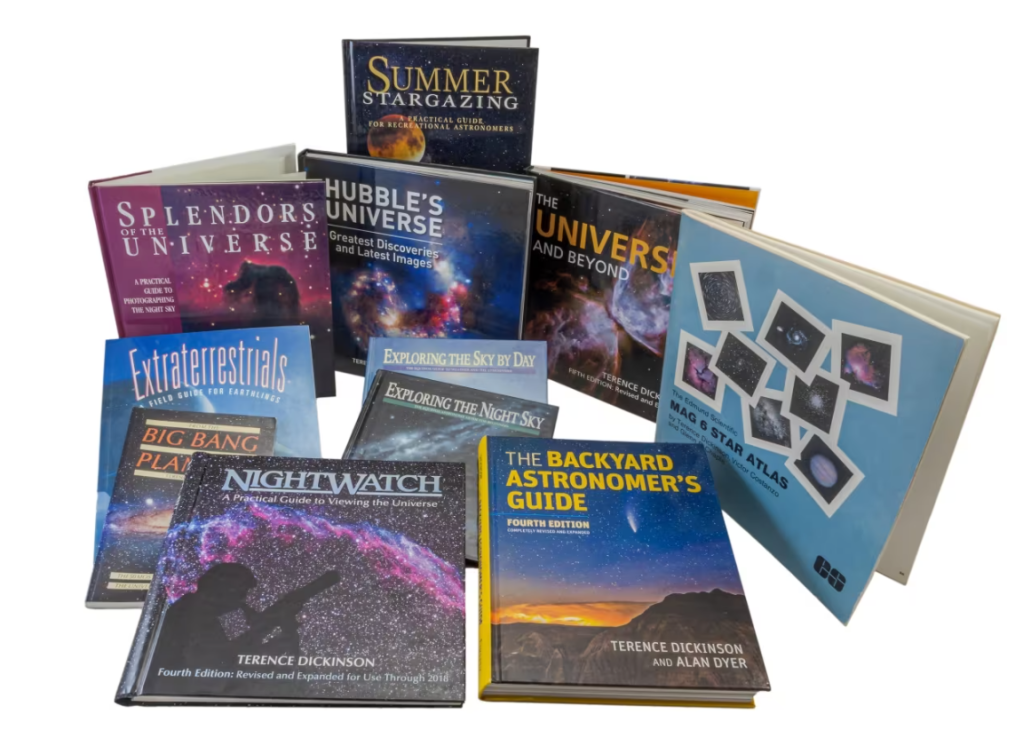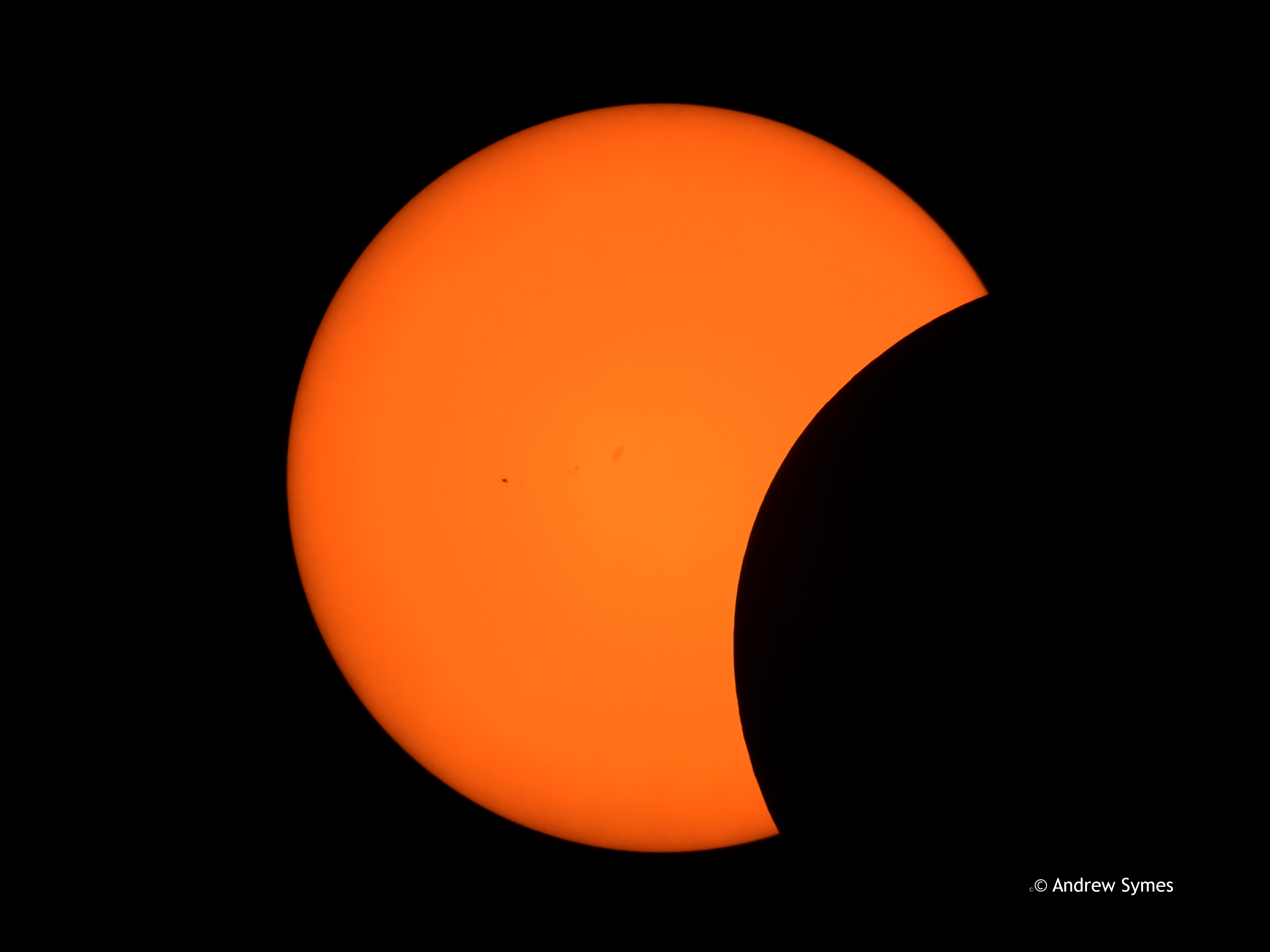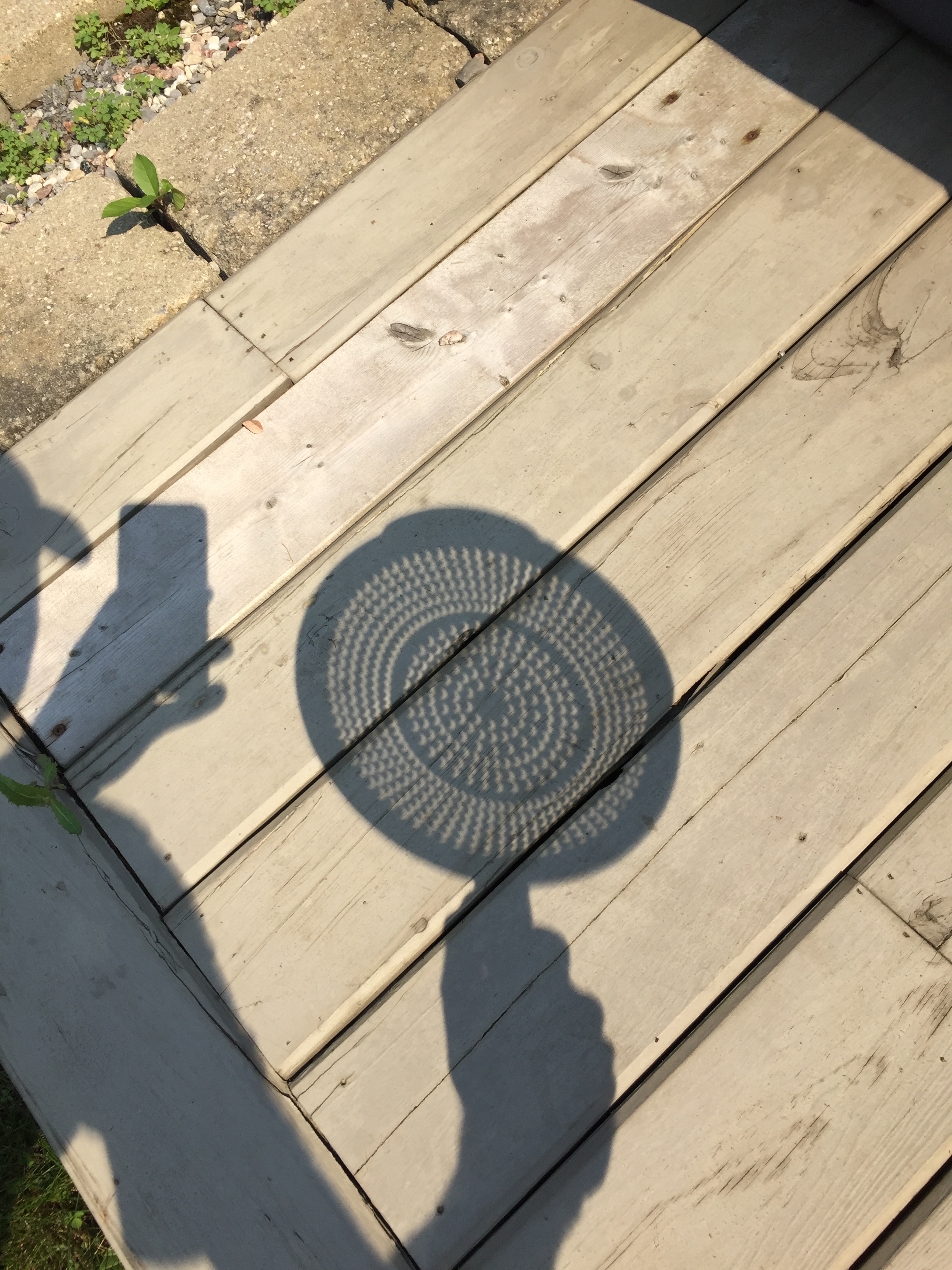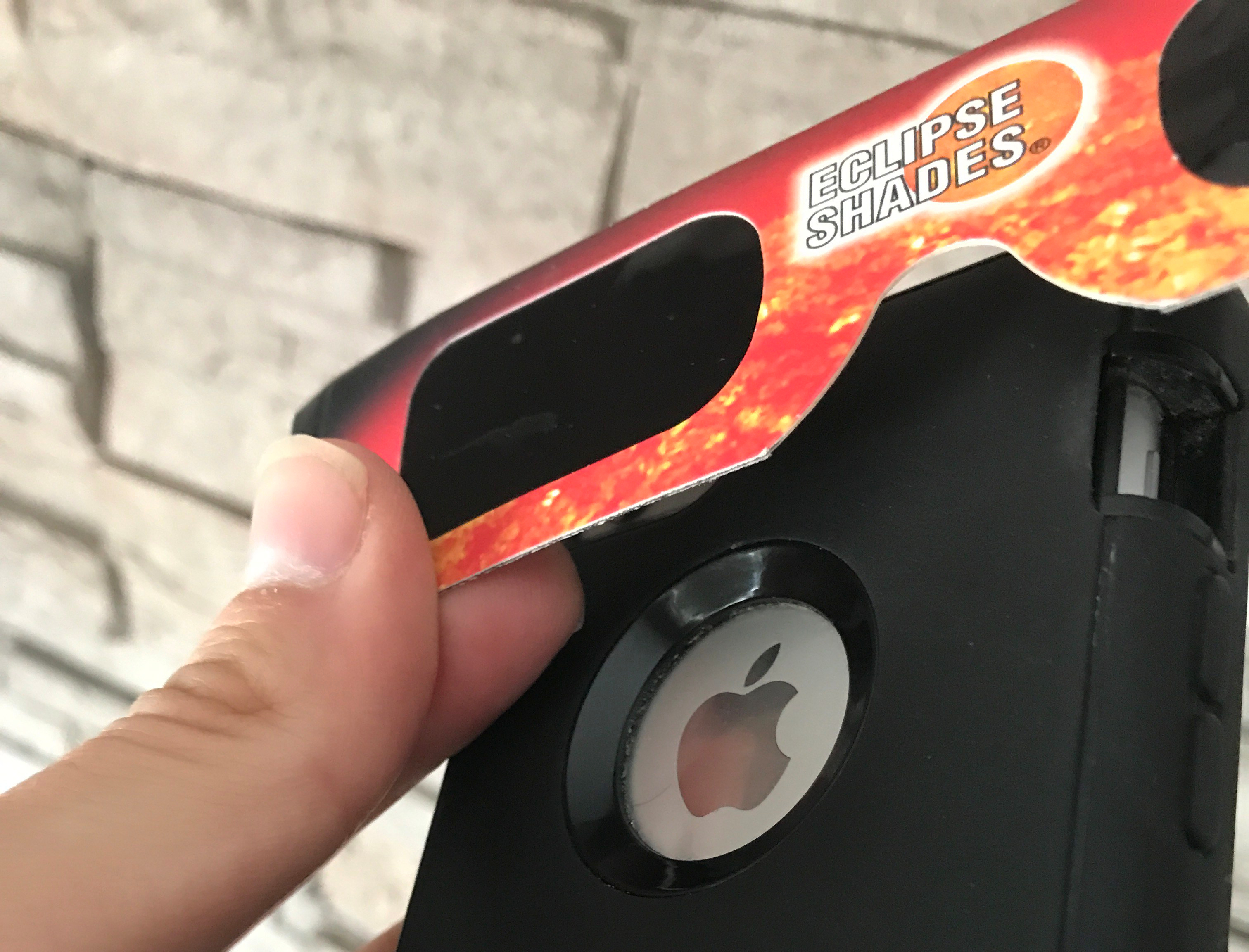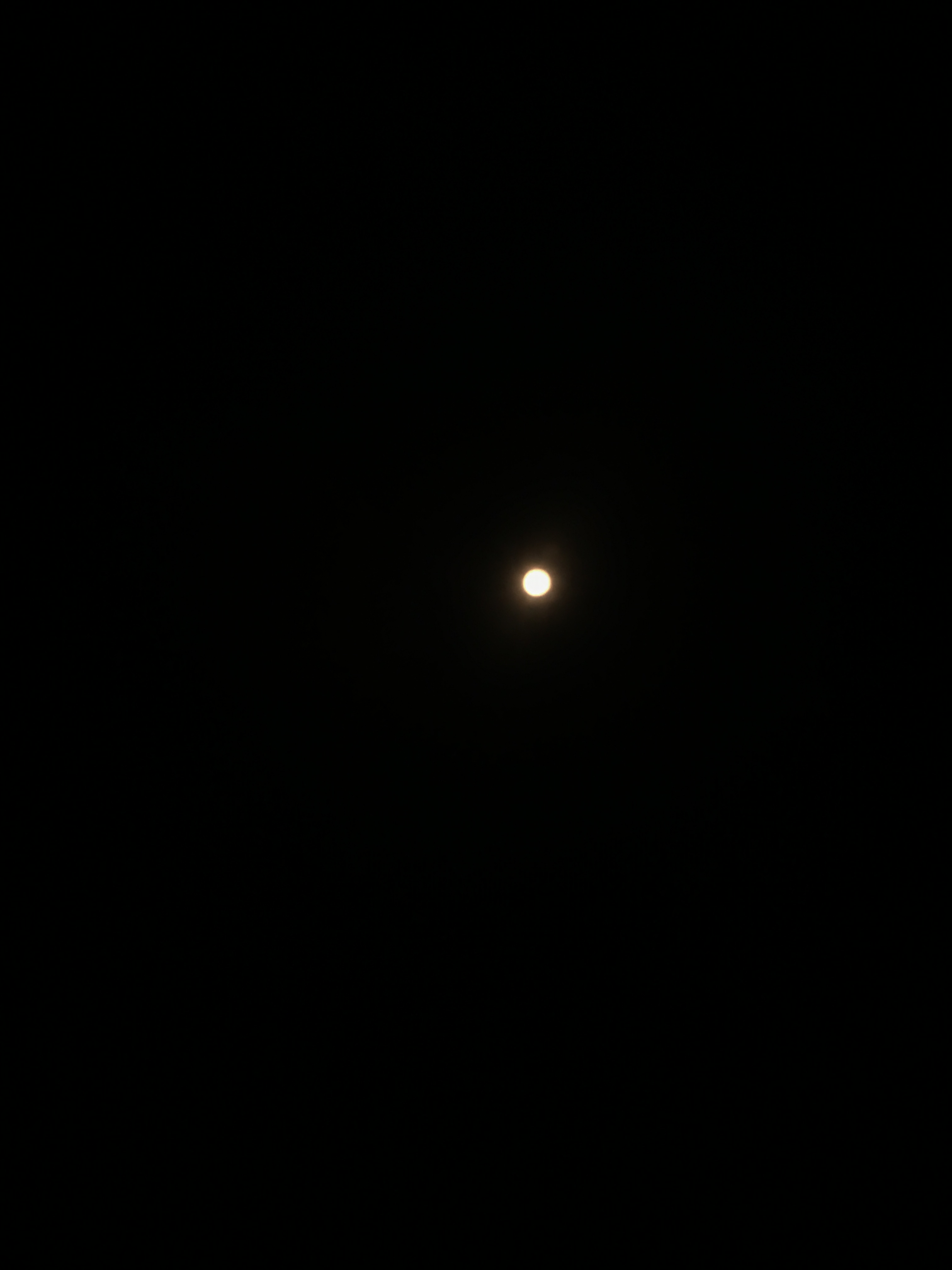
Heading Out
The morning of April 8, 2024, I had a decision to make. I needed to travel to a nearby city to witness a total solar eclipse – one of the few major astronomical events I had never experienced. It would be the last time a total solar eclipse would take place so close to me (Eastern Ontario) this century, so the stakes were high.
Thin- to moderate cloud cover was forecast for spots I’d previously considered such as Kingston, Brockville and Prescott, Ontario. These cities were located in the narrow “path of totality” that stretched from Mexico to the Maritimes. To see the moon completely cover the sun, I would need to find a location within this ~200km wide path. One nearby city, Cornwall Ontario, was located in the right place but it would experience totality but for a shorter time (just over two minutes vs. around three minutes in Kingston). Cornwall’s weather forecast looked more promising than areas West of me, however, so I decided to head in that direction to increase my odds of clear skies that afternoon.

Around 8:45 a.m. I headed out for the hour and a half drive to Cornwall. I’d loaded all of my gear into my car the night before to ensure I didn’t forget something important. In addition to my trusty iPhone, I was bringing along my Celestron NexStar 8SE telescope to capture some of the action. My goal was to take in as much of the eclipse as I could with just my eyes, but I wanted to have my telescope (and special solar filter) there to observe and photograph the moments leading up to totality as the dark moon slowly crept up and covered the bright sun. If I could also capture totality telescopically, that would be a fantastic bonus! My immediate priority, however, was to get to Cornwall and find a suitable place to park and set everything up.
Arrival
I arrived in Cornwall just before 11:00 a.m. and the first location I’d scouted out the night before – Lamoureux Park – had a few parking spots left, so I was thrilled. I needed a location with an unobstructed view of the sun and a nearby place to park since I’d be making multiple trips to and from the car to unload and transport my gear. My equipment included a smartphone tripod, telescope tripod, computerized telescope “arm,” telescope tube, box of eyepieces/solar filters/eclipse glasses, lawn chair, portable stool, cooler with lunch and drinks, and a pair of binoculars).
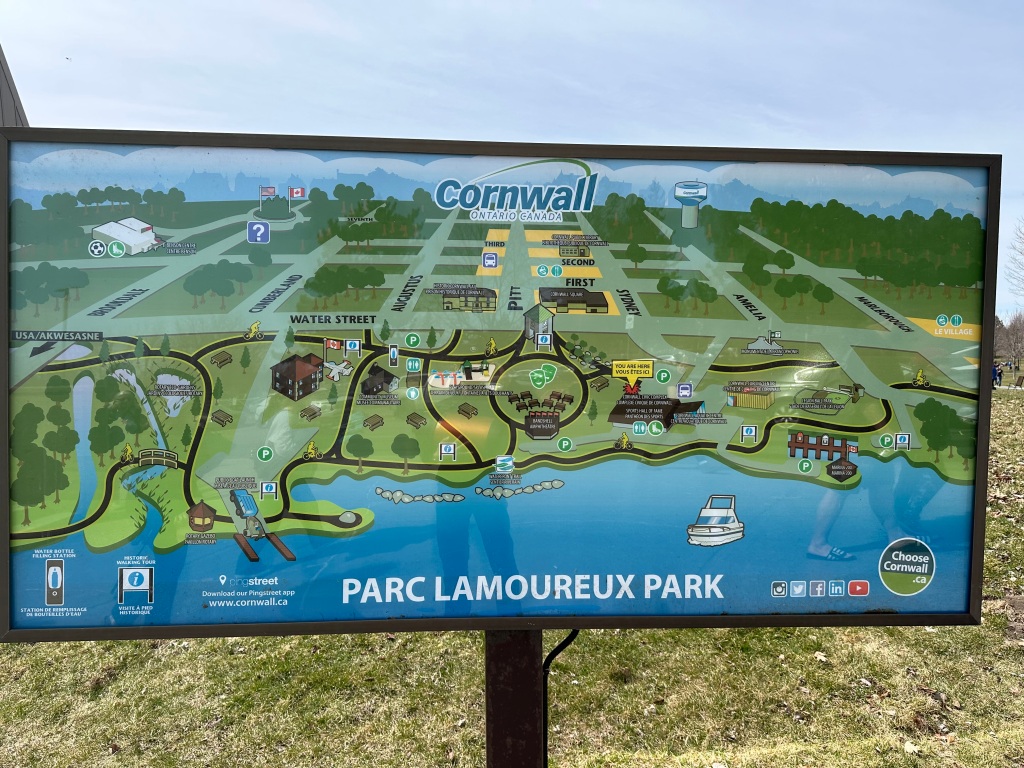
A few people had already already settled in to observe the afternoon’s event from the park (totality would take place around 3:25 p.m.) but I was able to find a nice unoccupied spot by the river’s edge.

After a few trips back and forth, I was set up and ready to wait. Thin clouds continued to very slowly drift in and out, and I found myself hoping the weather could continue to hold steady for just a few more hours.

By this point, I was committed to my location so I sat down and enjoyed the picnic lunch I’d brought with me as the crowd began to grow around me. My telescope attracted many onlookers and sparked a lot of conversation. Everyone who came by was incredibly friendly and excited – and nearly all of them were also visiting from Ottawa! Those who saw me attaching my iPhone up to my telescope wanted to see how the sun looked up close and many took photos of the sun as seen on my phone!

First Contact
The edge of the moon first took a tiny “bite” out of the sun around 2:15 p.m. I captured this photo through my telescope about 10 minutes later as the moon began to slowly make its way in front of the sun as seen from our perspective here on Earth. Two small sets of sunspots were also visible telescopically.
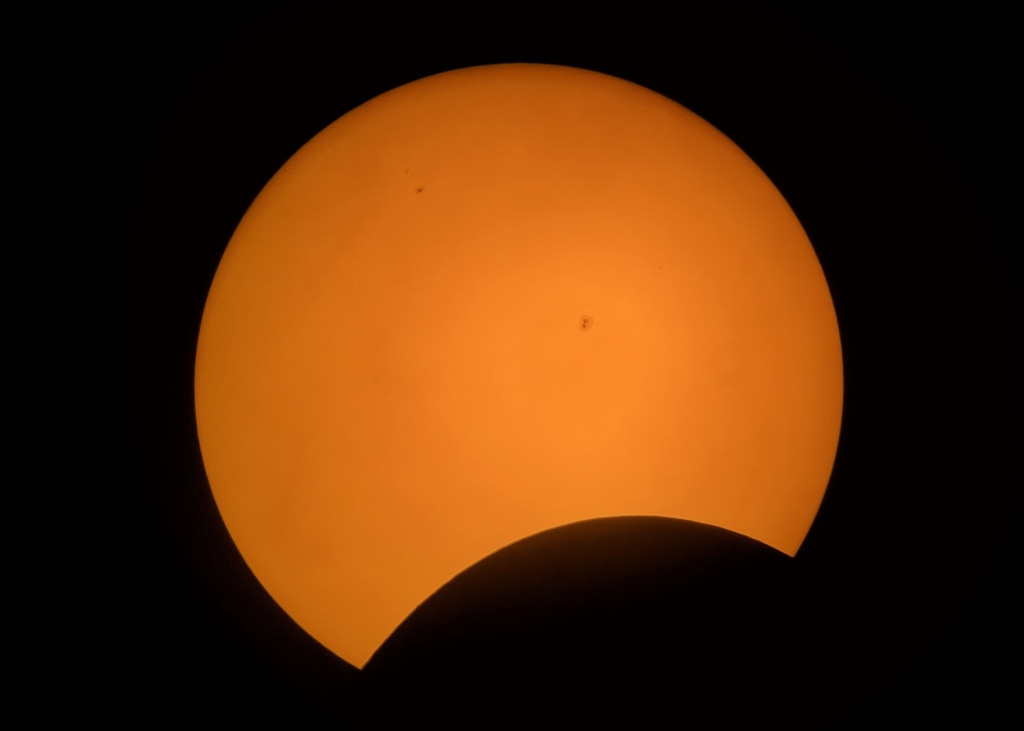
By 3:00 p.m. the moon had already covered more than half of the sun. The brightness of the sky and surroundings, however, was still unchanged. Here’s how things were looking through my telescope…

….and here’s the final product!
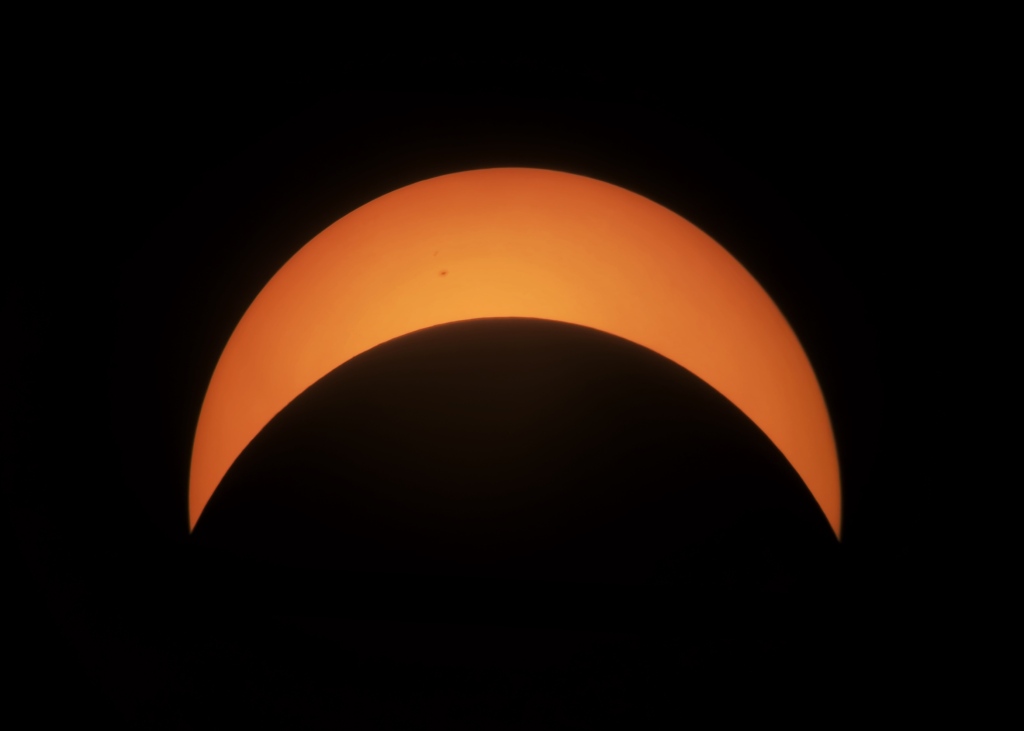
Approaching Totality
By 3:15 things were getting more intense. You could feel the excitement nervous energy building within the crowd since it appeared that that weather gods had smiled on us and we would not be dealing with any rogue clouds during totality, which was now just 10 minutes away! The colour of the sky and our surroundings was also changing. Things started looking more orangey-brown to me and it felt as if a very fast sunset was underway. Someone commented that it was like they were wearing sunglasses!

By 3:20, the world felt different. We knew that we were just 5 minutes away from something special and it was definitely starting to get darker and slightly colder.
Around two minutes before the predicted moment of totality, I started recording two separate videos: one on a smartphone placed on a tripod to capture a wide angle view of what was happening around me, and one on the iPhone attached to my telescope. By now the sun looked like just a tiny sliver – almost like a fingernail – through the telescope and to those watching with eclipse glasses. Many of us also spotted a bright planet (Venus) appear below the sun and knew something incredible was happening.
I’ve combined my two videos into one synchronized view so that you can get a sense of the sights and sound of what we experienced in real time!
How it Looked and Felt
While I’ve seen many beautiful photos and videos from many sources, they don’t match what those of us who were there in person saw with our eyes. The sky around the sun was not black but a deep, steely blue. The horizon was lighter – similar to what you’d see during a sunset or sunrise – but still very alien. And the eclipsed sun looked, to me, like an incredibly advanced computer animation from the future! The sun and corona were very crisp and the sun looked much larger in the sky than I’d expected. The eclipsed sun had almost a three-dimensional quality…almost as if it were a dark, round button-like disk surrounded by a bright halo affixed to a deep blue/grey background. It was as if a wormhole or black hole had somehow appeared momentarily in front of us. I’m sure my jaw dropped as it was truly a moment of utter amazement. I’m smiling as I type it now…and still awestruck as I recall it in my mind!
Cameras tend to overexpose or underexpose the scene but our eyes and brains take everything in perfectly. You truly need to see it in person to understand it and, even still, it’s not quite possible to describe it in words. It really is other-wordly and indescribable!
Nevertheless, here are a few images I took during totality. For an unknown reason, my computerized telescope decided to stop moving properly during totality and I could not adjust it to place the entirely eclipsed sun within the field of view. I did not want to spend those precious two minutes fussing with equipment, so I continued recording what I could while trying to soak in the moment. After recording the eclipse, my iPhone told me it had run out of storage and had not saved the video!?! I was more shocked than saddened since my iPhone had more than enough space to record a 4-minute video. Only once I later returned home did I realize what had actually happened…The video had recorded properly via the third-party video app I was using but was too large to be saved to my camera roll onsite. When I got home, I was able to recover it while reconnected to my home WiFi network! Phew!


Media Coverage
During the day, I noticed a few media personalities around. A television reporter from CBC was interviewing some people on camera as they arrived, and I was approached by a photographer from the Globe and Mail (Fred Lum) and and editor and reporter from the Quebec newspaper Le Droit. The editor was related to the very kind woman and daughter who had set up a spot beside me and he introduced me to journalist Charles Fontaine who interviewed me before and after the eclipse. Charles’ article can be read in French here: Tous ensemble pour vivre l’éclipse du siècle (All together to experience the eclipse of the century).
Heading Home
Following totality and some brief looks at the sun through eclipse glasses, I packed up my things and said goodbye to the people I’d met and spent the last few hours with. Many had taken photos of my telescope in action and came by to say thanks or goodbye. Everyone was in great spirits and amazed by what they had just seen.
The drive home to Ottawa took twice as long as it should have due to added traffic but it couldn’t dull the experience. I drove home feeling incredibly lucky to have been able to watch the entire eclipse and couldn’t wait to tell my family what I’d experienced!
If you ever find yourself close enough to travel to a location that will experience a total solar eclipse, I highly recommend it. You aren’t guaranteed to see a show since it completely depends on good weather, but the reward is well worth it!
Clear skies!



